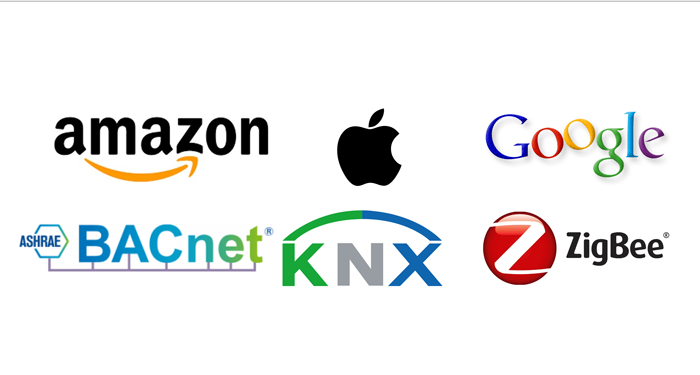What is the Chip Project?
In December 2019, Amazon, Apple, Google and the Zigbee Alliance announced CHIP ("Connected Home over IP", also known as "Commercial and Home over IP"), a project to create a single standard for communication between smart home devices. The goal is to simplify the development of smart home devices by ensuring that products that meet the new standard will work with popular ecosystems such as Amazon Alexa, Apple Siri, Google Assistant and Comcast's Xfinity. The CHIP project, as its name suggests, is based on the well-established IPv6 protocol. This means that, unlike other smart home standards, it can be used on existing IP carrier networks without the need for special hubs or protocol transfer gateways. The CHIP project aims to standardise the different application layer standards currently used in smart homes. It will build on the work and experience of the founding members so far. Including Amazon Alexa Home, Google Weave, Apple HomeKit and the Dotdot data model from the Zigbee Alliance.
 |
 |
 |
 |
 |
 |
 |
 |
CHIP also chooses IP
The creators of the CHIP standard decided that the protocol is based on IP. In principle, any IP-based network can be used for CHIP. The initial focus of the project is Thread, Wi-Fi and IP-based, low-power Bluetooth (as Bluetooth extensions to Thread).It takes advantage of the existing Wi-Fi infrastructure that many people have already built in their homes and adds Thread support. Because Thread is the leading secure, low-power networking (mesh) technology, it enables a wide range of IoT devices, including sensors and pushbuttons that can run for years on a single battery. Unlike other networking technologies used in smart home applications, Thread has been developed from the ground up to be fully based on the established IPv6 protocol. It enables direct, end-to-end encrypted communication between all devices in a smart home network and the Internet. This ensures secure and flexible off-host communications and connectivity to cloud services.Security is not affected by hubs or gateways that need to translate IP communications to and from vendor-specific protocols.
The CHIP Project in commercial building applications
Although the CHIP project is initially focused on residential applications, its creation is also an important development for the commercial world. Several basic commercial buildings, such as small buildings and offices, can use smart home technologies to meet their IoT needs. In these cases, the operation of lights, the control of door locks or window shutters, or even mechanical systems can be managed by off-the-shelf devices. These commercial applications can benefit from the increased compatibility of smart homes and the wide range of existing applications and voice assistants. Users will have access to a range of products that will work together.
How does the CHIP Project affect building automation?
Large-scale building automation systems usually have additional requirements, such as a centralised building automation system designed to meet the needs of the building and its users. Such a system allows for dynamic allocation of workspaces, provides the ability to analyse usage data, integrates with the backbone of the company's IP network, and can connect to cloud-based solutions. Thread, with its commercial extensions, was developed specifically to address these needs and has been chosen by many commercial-grade building automation standards, such as KNX and BACnet, as the low-power, self-healing wireless mesh networking technology of choice. In the past, we have seen several times that technologies that are widely used in the consumer market have been adopted for commercial applications. Whether adopted in its current form or used as a starting point to add specific commercial features, think of Wi-Fi, which started in the residential space and later made its way into commercial buildings. This is the main advantage of economies of scale. With many manufacturers making components used in the large consumer market, prices are falling faster and the range of options is growing. Thus, the wide range of residential devices and products also benefits commercial applications. With Thread being the low-power mesh technology of choice for the CHIP project, the number of Thread-based devices and products is likely to grow significantly in the future.</span
Thread flexibility in the commercial layers
Thread has always been agnostic to the application layer used on the network. In this respect, it is similar to all other IP-based network technologies, such as Wi-Fi or Ethernet. The Project CHIP announcement does not affect the Wi-Fi standard, and the same is true for Thread, which remains a truly low-power mesh technology designed entirely for IP communications. This makes Thread an ideal choice for IP-enabled commercial-grade building automation standards such as KNX, BACnet, OCF or Dotdot. Smart building designers can use any of these IP-based technologies (and even multiple standard systems on the same network simultaneously) and take advantage of Thread's strong commercial functionality for security, scalability, deployment, flexible sub-networking and network roaming.
The CHIP Project announcement also underlines that the industry has recognised the flexibility offered by IP-based networking and that Thread is an essential part of this.

